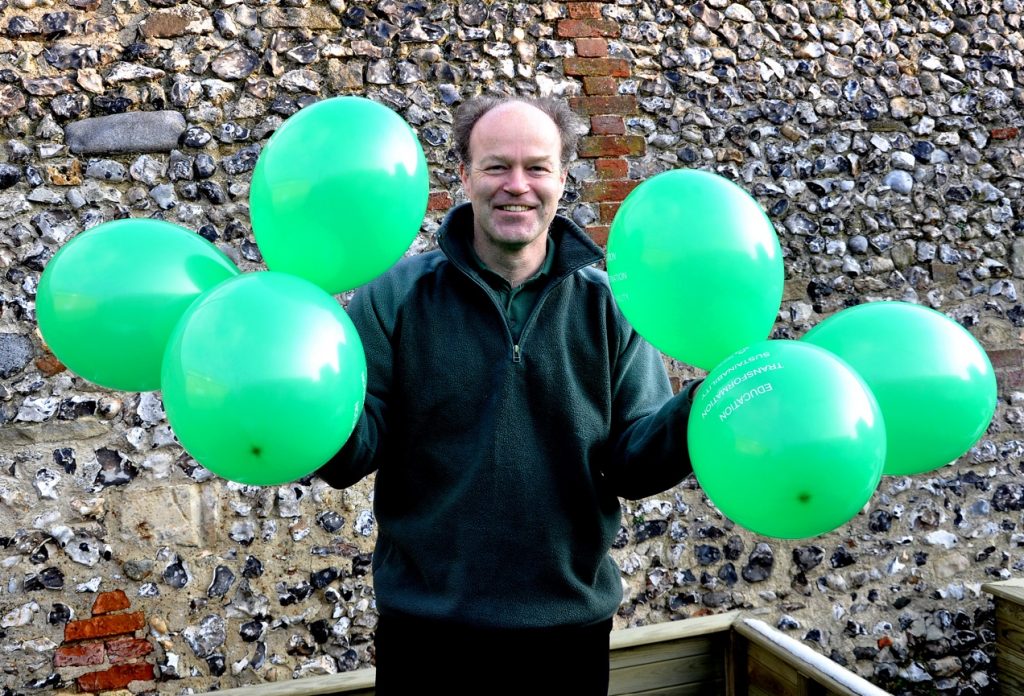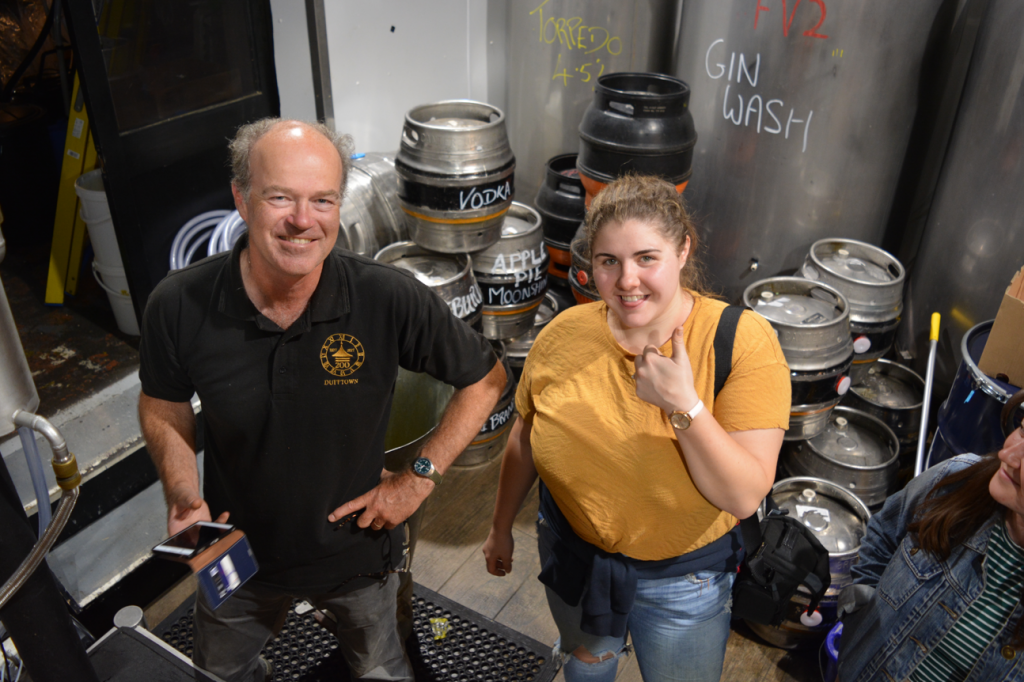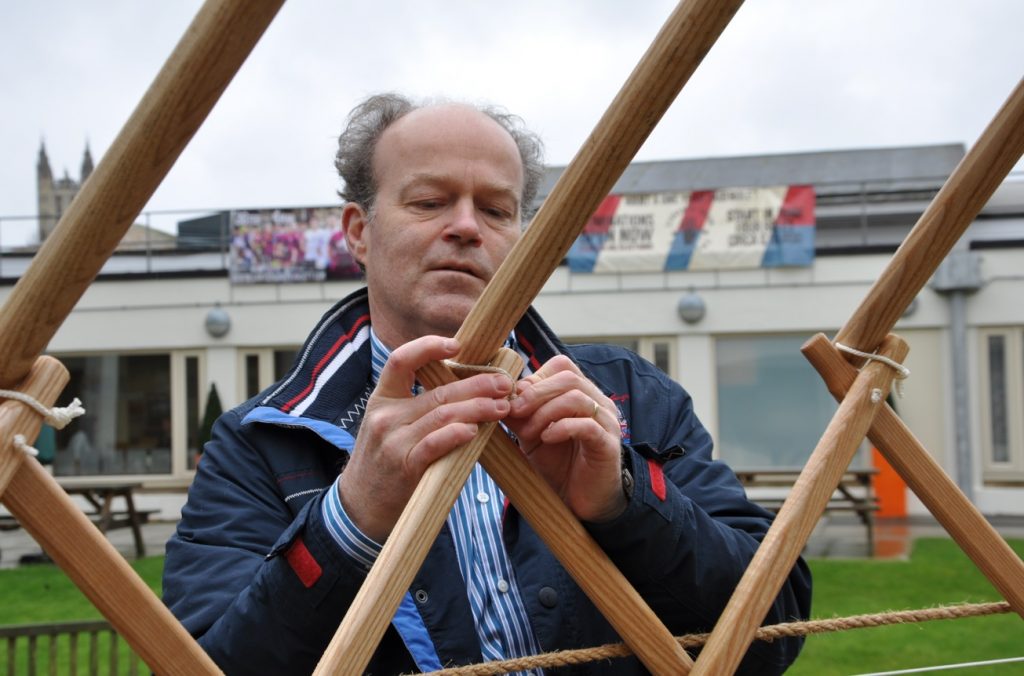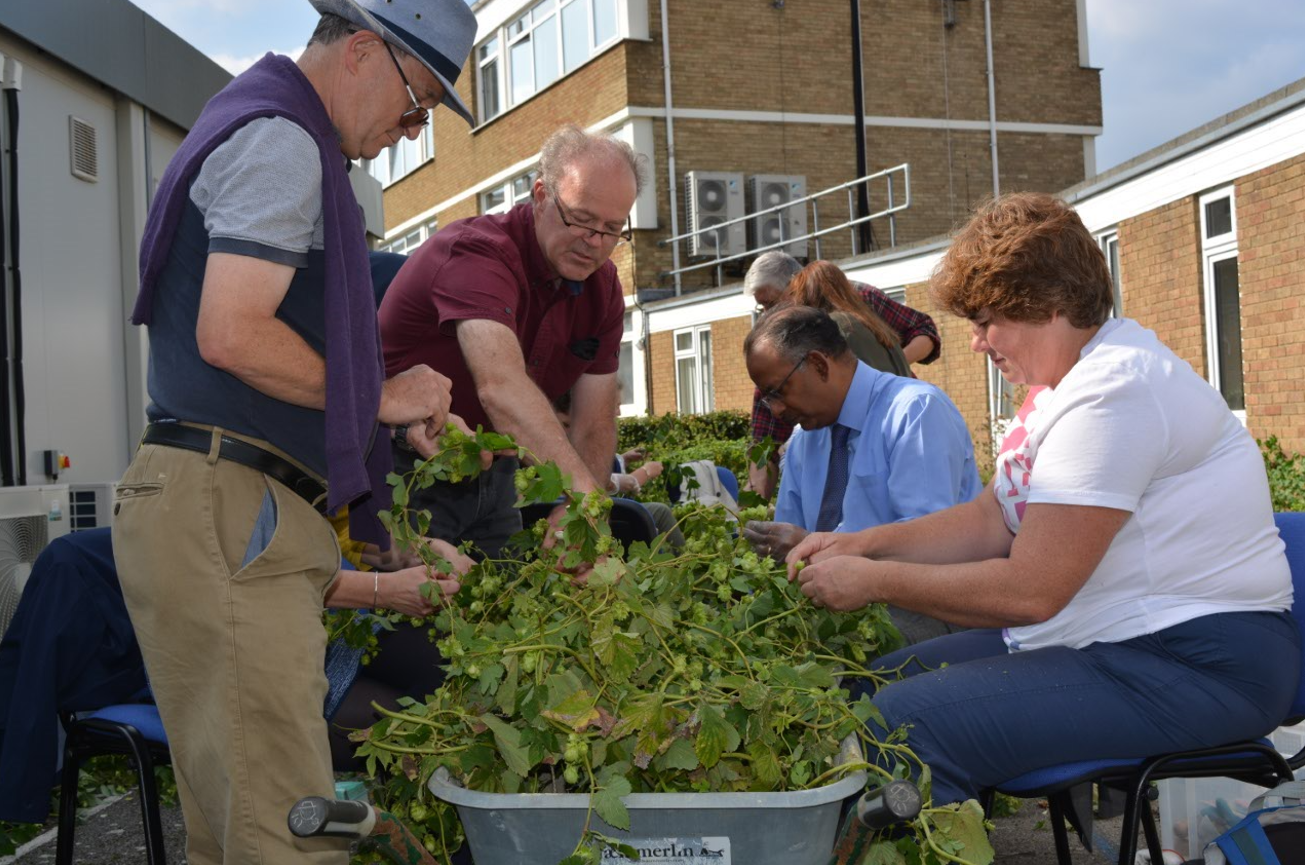On 24th May, we spent the afternoon celebrating Peter’s 24 years at CCCU in the best possible way – with good music, food and company. His roles have been diverse and include leading the IT department and overseeing the development of the new award-winning library and learning centre in Augustine House. In 2011 Peter was appointed Director of Sustainability Development. This involved establishing a brand-new team to deliver government carbon reduction targets, raise environmental awareness amongst students and promote new courses and programmes on sustainability in the academic portfolio. The team flourished under his leadership and established a national reputation for its work which can be traced in diverse book chapters, academic articles and electronic publications.
Peter brought his many skills and talents to his different roles. He was equally at home working out how best to position and secure hop poles in the University grounds as he was discussing the finer details of environmental policy. He was adept and promoting sustainability to different audiences. His hallmark qualities of critical questioning, quiet leadership and unassuming good humour endeared him both to the Sustainability Team and to colleagues across the university. And it was through networking at both a local and national level, that the sustainability agenda steadily gathered momentum and status at Christ Church.

One of the first projects which Peter developed was called the Futures Initiative. This provided pump priming money for colleagues to develop and apply their ideas about sustainability and the environment. A key component in the Futures Initiative was a residential programme at a peaceful old manor house where colleagues from different disciplines could work together in a ‘safe’ setting. The relationships which resulted from these events played an important part in establishing an embryonic network of sustainability enthusiasts which has since flourished across the university.
It was a chance encounter in 2015 which led Peter and his team to bring a major photographic exhibition called Whole Earth? to the university. This highly original exhibition was framed around Bob Dylan’s famous protest song A Hard Rain’s A Gonna Fall and consisted of six banners each ten metres long. It was the largest display ever hosted at Christ Church and was opened by the author Micheal Murpurgo. The exhibition was later taken to south India as part of a two-day symposium involving students from Christ Church and Trivandrum University, and a smaller version can now be viewed in the Johnson Building corridor, overlooking the Wellbeing Garden.

The opportunity to use the campus to illustrate different aspects of sustainability provided another avenue which Peter enthusiastically supported. One approach was to set up display panels celebrating the different plants and habitats around the site. Another was the idea of using the grounds to grow food which evolved into the mini allotments in the Wellbeing Garden, and heritage hops gardens that supply the harvest for our annual brew of ale. More recently one of the walls in the cloister has been set aside for a rewilding mural painted by an acclaimed local artist. There are just a few examples of the inventive and creative ways of engaging students and staff which Peter promoted.
So what was it that motivated Peter and those who gathered around him to advocate so ardently for sustainability? One way to answer this question is to turn to fiction and storytelling. In 2018 Victoria Field, a free-lance creative writer who works with Christ Church, offered to interview Peter and other members of the sustainability team about their experiences. Her fictional portraits shed an unusual and penetrating light on everyday life at an institution like Christ Church. This is one of the paragraphs from the fictionalised version of the interview Victoria conducted with Peter called The Prince and the Treasure:
“The prince looked and saw that his treasure had multiplied…he saw that everything that had happened in the forest was a kind of treasure, even if at first it didn’t seem so. It’s time to leave the forest…there are other places in the world to learn from. And the prince began to walk, towards the deserts, the mountains, the oceans carrying his treasure.”

Peter does indeed leave behind a rich legacy at Christ Church. He identified many ‘treasures’ which others might have overlooked and he can be justly proud of his extraordinary achievements. Peter, we will miss you enormously and wish you well in all those adventures which lie ahead, whether on land, or on water, or with the vibrant community you did so much to support.
By Stephen Scoffham, Reader in Sustainability, and Nicola Kemp, Education for Sustainable Futures Lead
 Sustainability
Sustainability Bethany Climpson
Bethany Climpson 861
861


